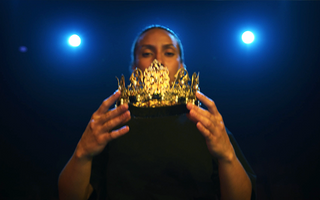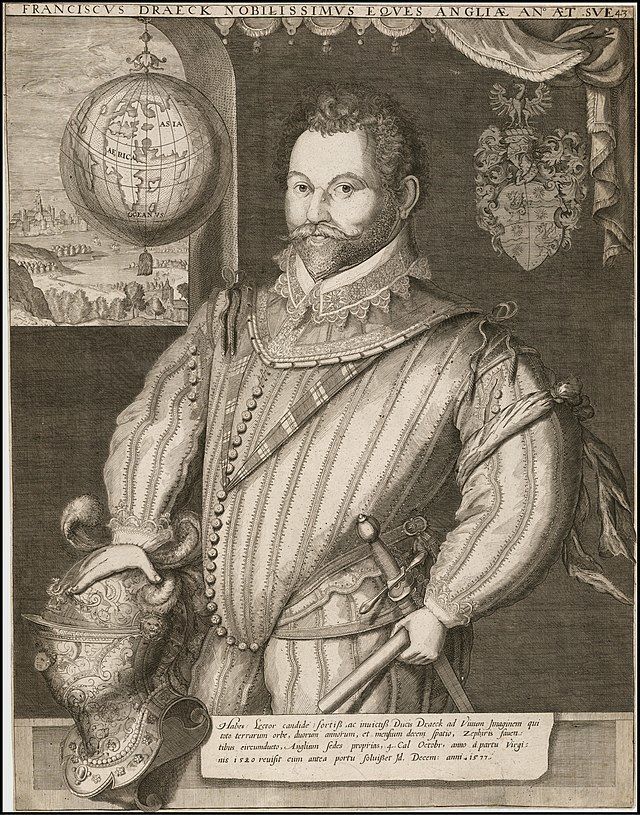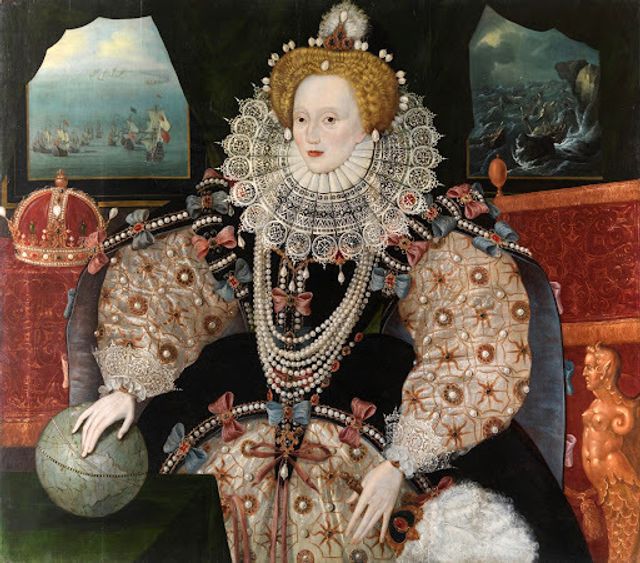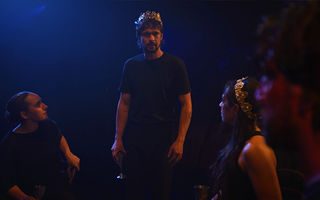 Watch
Watch
Shakespeare wrote and performed in London during the reign of two different monarchs, Queen Elizabeth I and King James I. Both rulers had significant influence on Shakespeare’s work and plays, and were fans of the theatre. Here are some key insights into the society these leaders created, and the world Shakespeare was living and writing in.

THE ELIZABETHAN ERA
The Elizabethan era was named after Queen Elizabeth I who ruled England during this time, and lasted from 1558 to her death in 1603. It was an important moment in English history and is often called ‘The Golden Age’. It saw the country emerge as a great naval and economic power. Sir Francis Drake, one of England’s most celebrated sea captains sailed around many parts of the world during this era and sea voyages became the hot topic of society. This was also an era that saw huge numbers of refugees taking asylum in England (particularly London), due to religious wars all over Europe.
The population of London grew by 400% in the 1500’s. During this time the economy boomed and London became known throughout Europe as a leading hub of art, literature, theatre and culture. St Paul’s Cathedral in the centre of London, which is now a beautiful pristine church and tourist attraction, was then a noisy meeting point of tradesmen, lawyers, drunks, vagrants and people were known to even urinate in the corners of the building.
Death was a cruel and common reality during this era in England. In the second half of the 1500’s around 20% of the infant population died every year, and London lost approximately 10% of its population each year to disease.
Social laws were strict in general. People were fined or even arrested for things such as not getting permission to have a guest stay at your house, allowing your geese to wander free on the town streets, and not attending church. If you had committed theft or murder and couldn’t prove that you were literate, you suffered the death penalty. If you could read and write your life was saved, but your skin would be branded by hot iron with a ‘T’ for theft or an ‘M’ for murder.

Queen Elizabeth I used to put the heads of traitors on spikes on the London Bridge for everyone to see. As this was the main entrance to the city it would have been one of the first things people saw when entering London.
Public image and fashion were held with the utmost importance and gave a clear indication of someone’s social position. ‘Sumptuary’ laws that meant that citizens were fined or even arrested if they wore colours or clothing materials that were above their status.
Chivalry was an important part of Elizabethan culture. Queen Elizabeth I gave nicknames to men in her court. Her chief minister, Burghley, was called her ‘spirit’, her friend Robert Dudley, Earl of Leicester, was her ‘eyes’ and she cheekily called François, a French Duke, her ‘frog’!
Entertainment at this time was quite gruesome, bloodthirsty and always a spectacle. For instance, some of the most popular events were cockfighting (roosters fighting to the death), bear-baiting (dogs attacking a live bear in a ring), shooting ranges, street archery (lots of civilians were killed by accident when people played this), public hangings, beheadings, and fireworks.
Less gruesome was the other popular pastime, watching live theatre. Because theatre had to compete with events such as bearbaiting, Shakespeare and other writers made sure that the stories they presented on stage were full of action, intrigue, and often, lots of death. You could attend a show for the price of a loaf of bread. The cheapest tickets cost one penny, and required you to stand to watch the play. People who did this were known as the ‘Groundlings.’ The wealthy could pay to sit in a box high above the stage to watch the play. Theatre-going was popular for all types of people, from the poor to the nobility.

ABOUT QUEEN ELIZABETH I
Queen Elizabeth I is one of the most iconic figures in English history and reigned from 1558 until her death in 1603. She was a very popular queen, called ‘Gloriana’, and brought almost half a century of peace to England. Elizabeth’s father was King Henry VIII and her mother was Henry’s second wife Anne Boleyn, whose execution was arranged by Henry when Elizabeth was only young. One of Elizabeth’s crowning achievements was the 1588 defeat of the Spanish Armada, giving her legendary status.
Queen Elizabeth I always appeared at court dressed in lavish gowns of rich materials and vivid colours whilst her serving ladies were only allowed to wear black or white. Elizabeth was obsessed with her appearance, and she had an elaborate ritual of dressing. It took her serving ladies an astounding four hours a day to dress and undress her. She always wore white-faced makeup which got increasingly thicker as she got older. It was called her ‘mask of youth’ and was a mixture of white lead and vinegar that was actually poisonous.
Certain records say that some of Queen Elizabeth I’s dresses were so heavy and weighed down with ornaments and jewels that she couldn’t even walk in them. Instead, she had to be wheeled around the court on a cart by servants. However, Elizabeth actually didn't spend as much money on clothes as other Kings did in the past, in fact she spent around 5 times less than the men did.

ABOUT KING JAMES I
When Queen Elizabeth I died in 1603, James the 6th of Scotland became King and was known thereafter as James the 1st of England. His reign is known as the Jacobean era. King James I had been King James VI of Scotland for 37 years before he succeeded to the English throne. Both James’ parents were assassinated years earlier and he brought a lot of the personal fear and anxiety he suffered into the court and his governing of England.
King James I offered much patronage and support to the theatre, including to Shakespeare. As a mark of his support, in 1603 Shakespeare’s company became known as The King’s Men. They performed eight plays at court that winter.
James was a superstitious and paranoid king who greatly feared the art of witchcraft. In 1597 he wrote a political and theological publication on the subject called Daemonologie that justified the persecution of witches in a Christian society under the rule of canonical law. In 1604 James passed the Vagabond and Witchcraft Act which meant that many women were accused of witchcraft, hunted down, trialed unfairly, and burnt at the stake in public.
In 1605 a group of Jesuit priests attempted to blow up parliament and take King James’ life. This is known as the ‘Gunpowder Plot’. It is interesting that Shakespeare performed Macbeth the following year, a play that warns of the consequences of murdering a king (and features witches).








